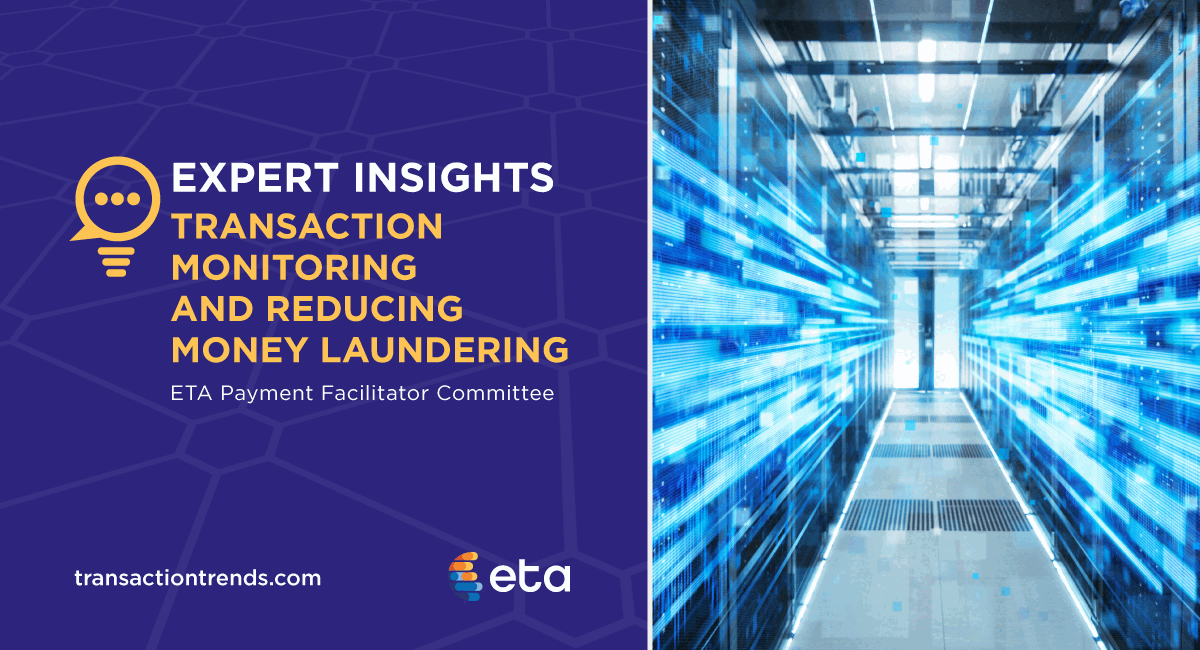ETA Expert Insights: Transaction Monitoring and Reducing Money Laundering

The latest roundtable discussion with ETA’s Payment Facilitator Committee provided insights into how PayFacs can implement an Anti-Money Laundering (AML) surveillance program to alert you to unusual customer behavior or suspicious money movements.
Performing transaction monitoring when looking for fraud, laundering, or general misuse of consumer card information may not be sufficient to satisfy AML efforts. Such requirements are never stagnant, and automated monitoring of transactions for AML concerns that may be viewed as a best practice today could be considered table stakes by acquirers tomorrow.
Michael Doron of Hawk:AI and Dan Spalinger of Infinicept delved into creating a multi-layered approach to AML Surveillance.
KEY TAKEAWAYS
- Increased AML Surveillance is needed from PayFacs to meet the following:
- Move to Real-Time Payments
- Pressures from the card schemes or sponsoring banks
- Entering high-risk verticals (e.g., gaming, gambling, or cannabis)
- The need to be able to monitor all the payment channels, e.g., eCommerce, Point of Sale, mobile, MOTO
- Monitoring for illicit financial activity related to human trafficking
- Monitoring for non-profit / NGOs susceptible to money laundering
- PayFacs should consider a multi-layered approach to AML Surveillance which includes:
- Collecting information from your customers for verification (e.g., government-issued IDs, utility bills for address verification purposes, and other supporting documentation) to satisfy your institution’s Customer Identification Program (CIP).
- KYC also includes your customer’s Customer Risk Rating, which could fall under the customer due diligence segment (CDD) of your AML program.
- Additionally — specific customers could present unique risks to a payment institution, and these customers may fall within the parameters of Enhanced Due Diligence (EDD).
- Understand the importance of Fraud & AML (‘FRAML’) in your strategy results in recognizable efficiencies and improved financial crime-fighting effectiveness for your financial institution. Performing AML Transaction Monitoring in real-time, along with Fraud checks, will allow you to make better, faster, and more accurate decisions on cases.
- Geographic risk is just one of many factors in a comprehensive scoring used during a Customer Risk Rating process. Financial institutions must include geographic risk in their anti-money laundering (AML) programs. The TWO domestic higher-risk geographic locations in the United States used for law enforcement and investigative purposes are:
- High-Intensity Drug Trafficking Area (HIDTA)
- High-Intensity Financial Crimes Area (HIFCA)
- You may need to move beyond simple rules-based exception monitoring and consider using Machine Learning or AI to parse through the vast data available to a PayFac regarding its transactions, merchants, and cardholders in an automated fashion.
- This does not remove the human element from the equation since investigations of what may be false positives and the identified incidents, in general, would still fall to a human analyst to resolve.
The roundtable was led by members of the ETA Payment Facilitator Committee. ETA’s committee structure harnesses the collective expertise of ETA and its members to help navigate industry-wide opportunities and challenges. Participation is open to ETA members. Learn more here.

